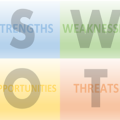
A PEST Analysis is not a way to rid your office of undesirable rodents, although I suggest you take care of that first if it is a problem. Rather, it is strategic analysis technique which analyzes the external environment within which an organization operates. It is designed to give an organization a good overall picture of what factors are affecting its business. The acronym stands for:
- Political
- Economic
- Social
- Technological
Political
Most businesses operate with many government regulations they must follow. Some industries more than others, of course, but either directly or indirectly all organizations need to know the regulatory framework within which they operate.
Tax policies within the industry often govern business decisions. For example, automobile manufacturers often choose locations based on tax policies. How they might change over time is also paramount to the tax equation.
Trade restrictions and tariffs are important considerations in many industries, particularly manufacturing based industries.
Political stability can become an issue as well. If the company, or any of its facilities, are located in jurisdictions that are likely to endure changing political conditions, this can cause major business disruptions.
Economic
Particularly for large businesses, interest rates and the cost of capital are important considerations. If rates rise, business expansion suffers because the debt payments are higher. Be aware that using cash on hand for business expansion does not eliminate this problem. In that case opportunity costs are increased because the company can earn a higher interest rate on the capital that is invested rather than used to expand the business.
The higher the inflation rate, the more sense it makes to deploy capital quickly (purchase equipment, etc). If purchasing a company, unlike equipment and the like, the asset being purchased is experiencing the same inflationary pressures (all things being equal). That being said, I’ve been involved in a highly inflationary environment (Alberta’s oil sands, 2005 – 2009) and I think it’s better than deflation. In an inflationary environment it seems like you can’t afford anything because the prices are going up monthly, but revenues are also rising. The opposite is the highly deflationary environment, similar to Japan in the 1990’s. Prices are decreasing so you put off purchases with the expectation you can purchase them cheaper later, but meanwhile the pressures on your own revenue down as well.
Of course, if the inflation is related to the printing of money by the central bank, it’s just plain bad for business.
Currency exchange rates affect many organizations who do business in multiple countries. The prospects for future changes in rates are an economic factor.
Social
One of the most fundamental issues to any corporation is the consumer demand for its product. Whether it will change, and what factors impact this change, is an analysis that can’t readily be ignored.
Maybe the market size is increasing or decreasing. This is a macro factor existing simultaneously and overlain by the individual product demand. Similar to a helium balloon in an elevator – the balloon might appear to be rising but if the elevator is going down, it might not be.
Attitudes among the population toward things like health care, consumer electronics, safety, and so forth, are constantly changing and this represents another form of social change that organizations should be aware of.
Sometimes consumers develop an irrational love for a product and overlook other negative factors going against it (think iPhones). This is a mania. The opposite is a panic, equally as important to analyze and predict. Particularly with fast changing technology this can be an important consideration in a corporate strategy.
Lastly, demographics such as population growth and decline, age distribution, geographical distribution of age groups, and the like fall under this category.
Technological
Almost every business today is undergoing technological change. If yours is not, what technology can you think of that could improve and/or streamline yours or your colleagues work? Even the old and staid manufacturing industries are being disrupted.
New technology can give your competitors a lower manufacturing cost, higher profit, or both. It could also be used by you to jump a step ahead of your competitors. It can also be used to increase the quality or life of a product. It usually requires some sort of investment so the Return on Investment (ROI) should be calculated.
New technology can also decrease barriers to entry, so that new competitors can easily jump in and make life very difficult for established businesses.
Conclusion
If you’ve exterminated all of your office rodents, the rest is a piece of cake. The checklist above is pretty comprehensive, but please let me know if the comments if I’ve missed anything.





